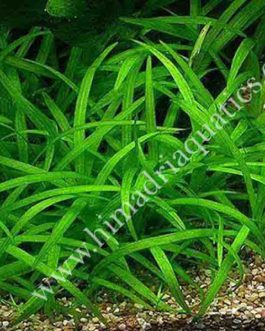Myriophyllum heterophyllum(3 stems)
Original price was: ₹55.₹28Current price is: ₹28.
Out of stock
Email when stock available
Description
This product can ship to all over India.
Myriophyllum heterophyllum, commonly known as Variable-leaf Watermilfoil or simply Watermilfoil, is an aquatic plant belonging to the Haloragaceae family. It is native to North America and is found in a variety of aquatic habitats, including lakes, ponds, rivers, and slow-moving streams. Watermilfoil is known for its finely dissected underwater foliage, which gives it a delicate and feathery appearance.
Here are some key characteristics and information about Myriophyllum heterophyllum:
- Leaf Variation: The species name “heterophyllum” refers to the plant’s variable leaf morphology. The leaves can vary in shape, size, and color based on their location on the plant and the water conditions. Submerged leaves are finely divided into thread-like segments, resembling a feather or fern frond. Emergent leaves, which are found above the water’s surface, are often broader and more lance-shaped.
- Growth Habit: Watermilfoil is a submerged aquatic plant, meaning that most of its growth occurs underwater. It has stems that can grow up to several feet long, allowing it to reach towards the water’s surface. The plant can form dense underwater colonies that provide habitat and cover for various aquatic organisms.
- Reproduction: Watermilfoil reproduces through both vegetative propagation and seed production. It is capable of spreading rapidly due to its ability to grow from stem fragments, making control and management challenging in some aquatic ecosystems.
- Ecological Impact: While Watermilfoil has its native range and ecological roles, it can become invasive and problematic in non-native environments. Invasive Watermilfoil species can form dense mats at the water’s surface, which can impede water flow, crowd out native aquatic plants, and disrupt the balance of aquatic ecosystems.
- Control and Management: In areas where Watermilfoil becomes invasive, control measures may be necessary. These can include physical removal through harvesting, the use of herbicides, and the introduction of native aquatic species to outcompete the invasives.
- Horticultural Use: In the aquarium trade, some Myriophyllum species, including M. heterophyllum, are popular choices for planted aquariums. Their delicate foliage and ability to grow both submerged and emergent make them attractive options for aquascaping.
Given the variable nature of Watermilfoil and the potential for it to be invasive in non-native environments, it’s important to consider its ecological implications before introducing it to aquatic ecosystems. In its native range, it plays a role in providing habitat and food for aquatic organisms and contributes to the overall biodiversity of aquatic environment.
Only logged in customers who have purchased this product may leave a review.










Reviews
There are no reviews yet.